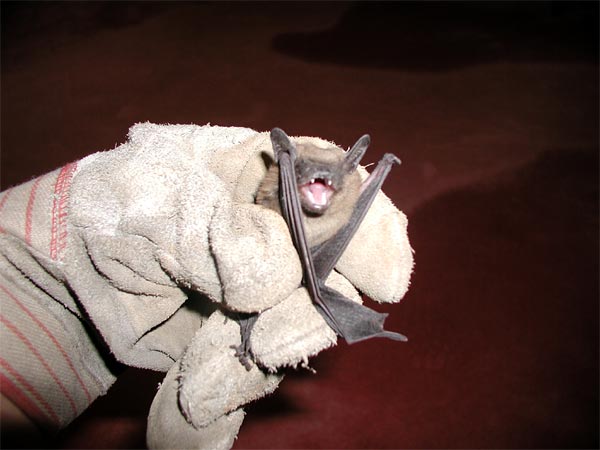
MEDIA RELEASE
From the Office of the Commissioner of Health, Dr. Gale R. Burstein
Date June 13, 2014
CONTACT: Mary C. St. Mary/Mary.StMary@Erie.Gov
Phone: 716.858.4941/ Mobile: 716.253.3925
Two Residents Bitten by Rabid Bat & Raccoon in Past Week
Warmer Weather Increases Rabies Risk from Wild Animals
ERIE COUNTY, NY—The Erie County Department of Health (“ECDOH”) is alerting residents to a very recent significant increase in animals confirmed rabid in Erie County. To date in 2014, thirteen animals have tested positive for rabies in Erie County (five raccoons, five bats, and one each of a cat, skunk and fox).
Rabies is caused by a virus that people and other mammals can get through exposure to the saliva or nervous tissue of a rabid animal and is fatal without proper “Post Exposure Prophylaxis (“PEP”) vaccines. Preventing rabies is as simple as ensuring adequate animal vaccination and control, avoiding contact with wild animals, and educating those at risk.
On June 11th, a 15-month old child in West Seneca was bitten on the face by a rabid bat in the child’s bedroom. On June 12th, a man in Alden was bitten when he attempted to stop a rabid raccoon from attacking his dog. Also on June 12th, a rabid bat was found inside a Buffalo home but fortunately no one was bitten.

“The only way to know if a bat has rabies is from a laboratory test. Our Environmental Health professionals will ensure testing of animals that could be infected with rabies. To stay safe, never handle a bat or any other wild animal” stated Erie County Health Commissioner, Dr. Gale R. Burstein.
“In addition, it is extremely important that all household pets receive rabies vaccinations. This includes “indoor cats,” as rabid animals, such as bats, can gain access to inside the home and may bite pets” concluded Burstein. A rabies vaccination for dogs and cats three months of age and older is mandatory in Erie County. The first vaccination is valid for one year with a booster vaccine every three years thereafter.
Facts about Bats and Rabies
• Bats have small teeth which may leave marks that are not easily seen
• Often people realize that they have been bitten by a bat. However, under certain circumstances
a person might not be aware or unable to tell you that they have been bitten, such as:
- a sleeping person awakes to find a bat in the room;
- a bat in a room with an unattended child;
- a bat near a person with disabilities;
- a bat near an intoxicated person.
In these circumstances, safely capture the bat intact without crushing the animal as the brain must be intact in order to be tested for rabies. If the bat tests positive for rabies or is unavailable for testing, the individual should seek medical advice regarding the need for PEP. Equally important, PEP immunizations can be avoided if the bat tests negative for rabies. If the bat is available for testing, ECDOH will arrange for the bat to be tested at no cost to the resident.
To reduce the possibility of a bat entering your dwelling, bat proof your home by keeping screens and doors shut and maintained and seal all exterior holes. Avoid attracting wild animals by not placing your pets’ food or water outside, as even empty bowls will attract wild and stray animals. Keep your garbage securely covered, as open garbage will also attract wild or stray animals. For more information, refer to the brochure on the ECDOH website: “What you need to know about Bats and Rabies”.
A human rabies virus infection is fatal. Therefore, it is imperative that ECDOH be notified of every potential exposure since timely immunization effectively prevents rabies in humans.
Facs about Post Exposure Prophylaxis (PEP)
- Indicated for persons possibly exposed to a rabid animal (or human)
- Possible exposures include animal bites or mucous membrane contamination with infectious tissue or fluids such as saliva.
- Blood, feces and urine do not carry the virus and are not infectious
- PEP should begin as soon as possible after an exposure
- Post exposure prophylaxis (treatment) regimen
- PEP for previously unvaccinated persons consists of a regimen of one dose of rabies immune globulin and five doses of rabies vaccine over a 28-day period
- Current vaccines are relatively painless and given in the arm, like a flu shot
Should you suspect an animal is rabid, get yourself, family members and your pets to a safe location. Contact the ECDOH’s Division of Environmental Health at 716-961-6800.
Erie County will offer three additional free rabies clinics in September:
•Wednesday, September 10, 2014, 4:00 PM – 7:00 PM
Erie Community College-North Campus, 6205 Main Street, Noonan Center - Maintenance Garage, Amherst
•Tuesday, September 16, 2014, 4:00 PM – 7:00 PM
Springville Fire Company, 405 W. Main St., Springville
•Wednesday, September 24, 2014, 4:00 PM – 7:00 PM
West Seneca Highway Garage, 39 South Ave. (off Union near NYS 400), West Seneca
# # #
For more information:
Erie County Department of Health – http://www2.erie.gov/health/index.php?q=rabies-information
http://www2.erie.gov/health/sites/www2.erie.gov.health/files/uploads/pdfs/brochurebatsandrabies.pdf
New York Department of Health -- http://www.health.ny.gov/diseases/communicable/zoonoses/rabies/
Centers for Disease Control and Prevention -- http://www.cdc.gov/rabies/bats/index.html

